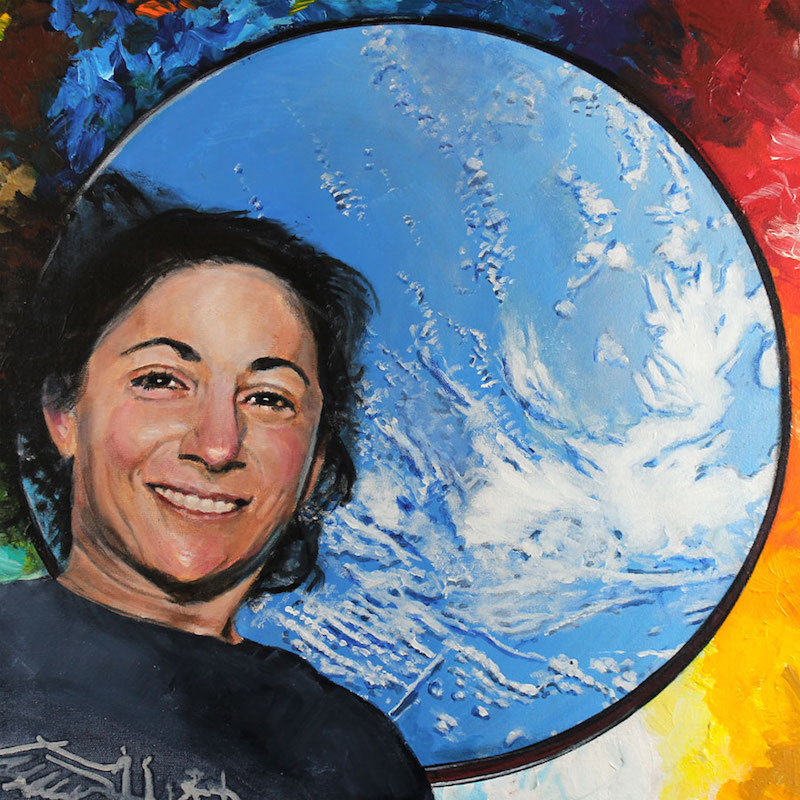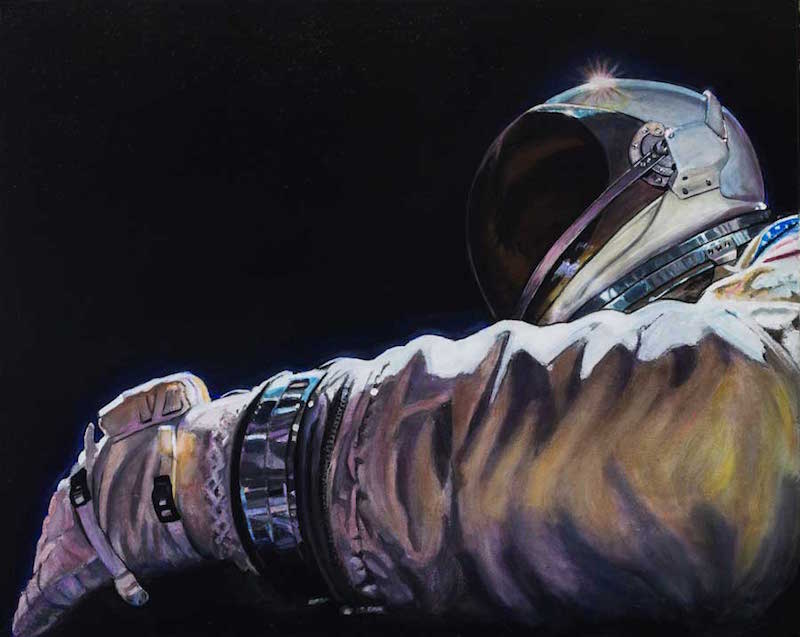by Simon Kregar
- Published: Thursday, March 23 2017 02:09
The Science of Beauty
What is art? Pretty pictures? Colors and patterns arranged to create an emotion in the observer? I would argue that art, for at least 35,000 years in human culture, is a way to communicate ideas and concepts that may transcend spoken or written language.
I subscribe to the school of Neuroesthetics, which is a relatively recent sub-discipline of empirical aesthetics. This takes a scientific approach to the study of aesthetic perceptions of art, music, or any object that can give rise to aesthetic judgments. Essentially I apply the scientific research in concepts of beauty and esthetics to the layout, composition and color use in my work.

Moon Builder, by Simon Kregar
Professor Denis Dutton came to my attention through Adam Block's fantastic presentation, “Sick, is That Real?” where he discusses the beauty of his astrophotography. In that he refers to a TED talk Dutton gave on the Darwinian theory of beauty. In his book “The Art Instinct”, he states, “We can say that the experience of beauty is one of the ways that evolution has of arousing and sustaining interest or fascination, even obsession, in order to encourage us toward making the most adaptive decisions for survival and reproduction.”
To illustrate this, 50 years ago Niko Tinbergen, an Oxford University scientist, made an extraordinary discovery. Seagull chicks will peck at a red dot on their mothers bill to induce feeding. When they were presented with an abstract version of their mothers beak - a yellow stick with three red stripes - the chicks went into a frenzy of pecking. The baby birds responded to the painted stick far more than their mothers' bills.
Tinbergen's creation bore no resemblance to a real beak and yet to the birds' brains it was somehow more "real." By exaggerating the reality of a beak, Tinbergen did what all artists strive for - he captured the essence of reality.
This experiment raises intriguing questions about the nature of art. If a painting triggered such a reaction in the visual processing regions of a bird's brain, might not art do the same in human minds?
Professor V.S. Ramachandran, Neuroscientist, reflects on this test by saying, "… About ten years ago… I started asking myself - what is art?.... When I started thinking about this question, I realized that one clue might come from research that was done on seagulls nearly fifty years ago at Oxford. I think there's an analogy here in that what's going on in the brains of our ancestors, the artists who were creating these Venus figurines were producing grossly exaggerated versions, the equivalent for their brain of what the stick with the three red stripes is for the chick's brain."

Tricks of the Trade (portrait of astronaut Nicole Stott), by Simon Kregar
So, have you ever wondered what those blue flecks are in your whitening detergent powder? What we perceive as pure, clean white is slightly shifted to the blue end of the spectrum. Those blue flecks are actually blue dye, shifting your whites ever so subtlety to the blue. Artists exploit this by either shifting whites to the blue, or in the case of my astronaut paintings, adding a blue line around the white to denote brightness.

Last Man Apollo 17 by Simon Kregar
Another technique that I use is the pulling and pushing of colors. It has been long known that you get different emotions and interferences from colors put together, but after all the research that has been done there is very little in the way of quantifying this beyond individual tastes. What we do know is that warmer objects (ones shifted to the red) seem closer or contrast against cooler, bluish ones.
So much of art is about contrast. One need not look further than William Blakes poem "Tyger,"
“Tyger, Tyger burning bright,
In the darkness of the night.”
In order to “push” and “pull” subjects, I rarely ever use black in any of my work. Instead I will mix a very dark brown or ruddy color to contrast against the bluish subject. This not only reinforces the illusion of brightness from above, but helps to create a sense of volume in the painting. By combining these techniques with composition one can then begin to deviate and tweak them in order to create tension in the work. Tension and color, pushing and pulling, drawing the eye, reaching the human heart, that's what art is about.

Gemini by Simon Kregar








Comments